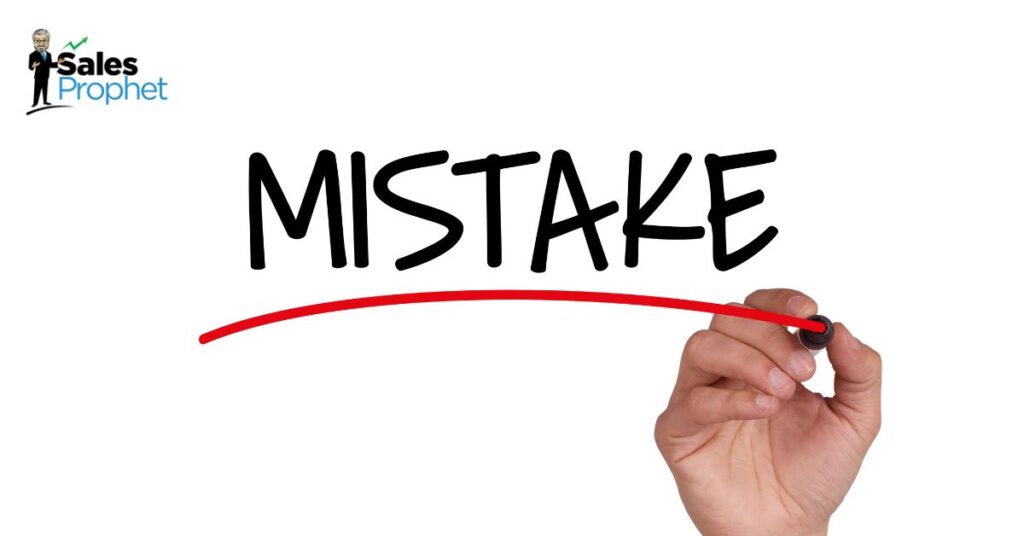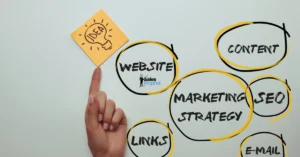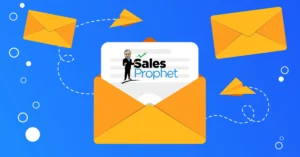Picture this: You’ve meticulously crafted a marketing strategy, pouring hours of effort into targeting specific accounts that you believe hold the key to your company’s success. You launch your campaign with high hopes and grand expectations, eagerly anticipating the influx of leads and subsequent conversions.
Yet, despite your best efforts, the results could be much better. Engagement is lackluster, conversion rates are dismal, and your return on investment is barely discernible. You’re left bewildered, wondering where you went wrong.
This scenario is all too familiar for businesses venturing into account-based marketing (ABM) without a clear roadmap. ABM, lauded for its precision and effectiveness, has emerged as a beacon of hope for companies seeking to target high-value accounts with personalized campaigns.
Yet, amid the promise of success lies a minefield of common mistakes that can derail even the most well-intentioned ABM initiatives.
Let’s delve into the world of account-based marketing, dissecting its intricacies and shedding light on the pitfalls to avoid. Whether you’re a seasoned marketer or a newcomer to the ABM landscape, understanding these common missteps is paramount to ensuring your efforts yield the desired results.
So, grab your magnifying glass, sharpen your wit, and let’s embark on a journey to uncover the top 10 mistakes to sidestep in your quest for ABM excellence.
Table of Contents
Lack of Alignment Between Sales and Marketing
One of the cardinal sins of ABM is the failure to synchronize the efforts of sales and marketing teams. Imagine a ship sailing with its crew rowing in opposite directions; chaos ensues, and the voyage is doomed from the start. Similarly, when sales and marketing operate in silos, the result is a disjointed customer experience and missed opportunities.
The Solution:
To rectify this misalignment, foster a culture of collaboration and communication between the sales and marketing teams.
Encourage regular meetings, agree on what is a good lead vs. a bad lead, determine your goals, and develop a unified approach to customer engagement. By aligning sales and marketing efforts, you can ensure a seamless experience for your target accounts, driving higher engagement and conversion rates.
Incomplete Account Research
ABM is akin to chess, requiring careful strategy and foresight. Yet many companies make the mistake of diving into ABM campaigns without conducting thorough account research. It’s like trying to navigate a maze blindfolded; you’re bound to hit dead ends and miss the mark.
The Solution:
Prioritize account research to gain deep insights into your target accounts’ pain points, challenges, and aspirations. Leverage data analytics, customer feedback, and market trends to inform your strategy and tailor your messaging accordingly.
Armed with a wealth of information, you can craft personalized campaigns that resonate with your target audience, driving higher engagement and conversion rates.
Generic Messaging
In the age of personalization, generic messaging is the kiss of death for ABM campaigns. Picture yourself receiving a generic email addressed to “Dear Valued Customer”; it’s as impersonal as it gets. Yet, many companies fall into the trap of mass communication, failing to tailor their messaging to their target accounts’ individual needs and preferences.
The Solution:
Embrace the power of personalization by crafting tailored messages that speak directly to your target person’s pain points and aspirations. Segment your audience based on persona, demographics, behavior, and engagement level, and customize your messaging accordingly.
If you are not sure where to start with developing your personas identify the typical job titles that fall under these personas below.
Research / Influencer – These personas are usually tasked to research potential vendors to address a particular problem.
End User – These personas are usually the people who will be using your product or service.
Decision Maker– These personas are usually the people who make the final decision on which product or service that is ultimately chosen.
Financial Authority – These personas are usually in charge of the financial aspects of the purchase.
Blocker – These personas look for reasons not to change vendors or look for obstacles that can sideline an opportunity.
Each of these personas has questions related to their job role.
By delivering relevant and timely content, you can capture the attention of your target accounts and drive higher conversion rates.
Ignoring the Buyer Journey
Account-based marketing is not a one-size-fits-all approach; it requires a deep understanding of the buyer journey and the unique challenges faced by each target account. Yet many companies make the mistake of overlooking this, bombarding their audience with generic content at every stage of the funnel.
The Solution:
Map out the buyer journey for each target account, identifying key touchpoints and decision-making stages. Tailor your messaging and content to address the specific needs and pain points of each persona at each stage of the journey.
We believe there are at least 5 stages to the buyer journey.
Learn – I think I have a problem
Solve – How do I solve that problem?
Compare – Am I solving the problem correctly?
Purchase – Help me make a purchase decision
Loyalty – Show me you appreciate me as a customer.
By delivering the right message at the right time, you can guide your target accounts through the funnel, drive higher conversion rates, and experience higher retention rates.
Overlooking Existing Customers
While ABM often focuses on acquiring new customers, it’s crucial to pay attention to your existing customer base. Your current customers are your most valuable asset, yet many companies make the mistake of overlooking them in favor of chasing new leads.
The Solution:
Invest in strategies to nurture and engage your existing customers, such as personalized communication, exclusive offers, and loyalty programs. Leverage customer feedback and insights to anticipate their needs and preferences, and tailor your messaging accordingly.
By prioritizing customer retention, you can strengthen relationships, drive repeat business, and maximize the lifetime value of your customers.
Failing to Measure Results
Measurement is the cornerstone of effective ABM, yet many companies fail in this regard. Without clear metrics and KPIs, it’s impossible to gauge your ABM efforts’ success or identify improvement areas.
The Solution:
Establish key performance indicators (KPIs) aligned with your ABM goals, such as account engagement, account penetration (number of contacts engaged at target accounts), number of meetings at target accounts, number of opportunities at target accounts, deal sizes, conversion rates, and ROI. Leverage analytics tools and tracking software to monitor your progress in real time and make data-driven decisions.
Regularly evaluate your ABM campaigns against your KPIs, and iterate based on the insights gained. By measuring results effectively, you can optimize your ABM strategy and drive better outcomes for your business.
Ignoring Feedback and Iteration
ABM is an iterative process that requires continuous feedback and optimization. Yet, many companies make the mistake of launching campaigns and moving on without evaluating their effectiveness or making adjustments.
The Solution:
Embrace a culture of experimentation and learning within your organization, encouraging team feedback and collaboration. Solicit input from sales, marketing, and customer service teams to gain diverse perspectives and insights.
Analyze the results of your ABM campaigns rigorously, identifying strengths, weaknesses, and areas for improvement. By leveraging feedback and iteration, you can refine your ABM strategy over time and drive better results for your business.
Focusing Solely on Marketing Automation
While marketing automation can streamline processes and increase efficiency, it’s not a panacea for ABM’s success. Many companies make the mistake of relying too heavily on automation and neglecting the human element of ABM.
The Solution:
Find the right balance between automation and personalization in your ABM strategy, leveraging technology to scale your efforts while maintaining a human touch. Invest in tools and platforms that enable personalized communication, targeted messaging, and seamless integration with your CRM system.
Train your team to use automation effectively while also empowering them to build authentic relationships with your target accounts. By combining the power of automation with human empathy, you can create memorable experiences that resonate with your audience and drive higher engagement and conversion rates.
A great way to get started in your account-based sales and marketing efforts is to use Sales Prophet’s account-based email platform. This platform gives sales and marketing teams the ability to create a list of target accounts that match their most profitable customers and add all of the relevant contacts typically involved in purchasing your products and services.
What makes Sales Prophet’s ABM solution so effective is the ability to copy multiple personas or influencers in the same email. This cold email outreach strategy proves to each persona you have done your homework by identifying the key stakeholders at your target account. We recommend you email the most senior people and copy key influencers/personas. This strategy forces a reply. We have seen reply rates up to 500% higher than sending an email to each person one at a time.
Not Investing in Technology
Technology plays a crucial role in ABM, enabling personalization, automation, and measurement at scale. Yet, many companies make the mistake of underinvesting in the necessary tools and platforms.
The Solution:
Allocate resources to invest in technology that supports your ABM strategy, such as CRM systems, sales automation platforms, marketing automation software, and analytics tools. Conduct thorough research to identify the right technology partners for your business, considering scalability, integration capabilities, and ease of use.
Provide training and support to ensure your team can maximize the value of these tools and leverage them effectively in your ABM campaigns. Investing in technology can streamline processes, improve efficiency, and drive better results for your business.
Lack of Patience and Persistence
ABM is not a quick fix or a one-size-fits-all solution; it requires patience, persistence, and a long-term mindset. Yet, many companies make the mistake of expecting immediate results and abandoning ABM efforts prematurely.
The Solution:
Set realistic expectations for your ABM initiatives, recognizing that success takes time and effort. Develop a long-term strategy with clear goals and milestones, and communicate these to your team to ensure alignment and accountability.
Stay focused on your target accounts, nurturing relationships, and delivering value at every touchpoint. Celebrate small wins along the way, and learn from failures to continuously improve your ABM strategy. By embracing patience and persistence, you can unlock the full potential of ABM and drive sustainable growth for your business.
Final Remarks
In conclusion, account-based sales and marketing holds immense potential for businesses targeting high-value accounts and driving revenue. However, success in ABM requires careful planning, alignment between sales and marketing, personalized messaging, and a commitment to continuous improvement.
By avoiding the common mistakes outlined in this blog post and adopting a strategic approach to ABM, you can maximize your chances of success and achieve your business goals.
Remember, ABM is not a one-time effort but an ongoing journey that requires dedication, patience, and a willingness to learn and adapt. By staying focused on your target accounts, embracing feedback, and leveraging the right tools and technology, you can unlock the full potential of account-based marketing and drive sustainable growth for your business.
An easy way to get started in your account-based sales and marketing journey is to check out SalesProphet.io This will help you create a list of ideal accounts and contacts at those accounts to begin your outreach efforts. From there you can expand your efforts by adopting additional marketing technologies, strategies, and reporting.




